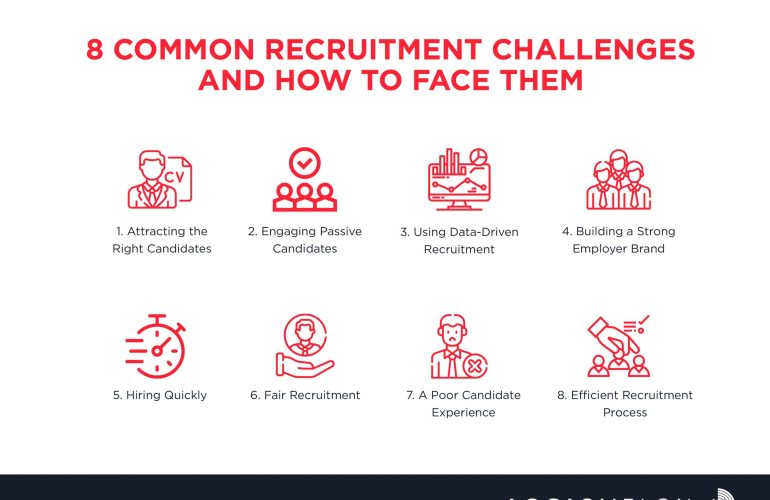In today’s competitive labor market, organizations face the dual challenge of attracting top talent while efficiently navigating the complexities of the recruitment process. As companies strive to enhance their hiring strategies, the implementation of advanced recruitment software has emerged as a pivotal solution. This article delves into the various facets of recruitment software and its role in streamlining hiring workflows, improving candidate sourcing, and fostering engagement throughout the recruitment lifecycle. By embracing these technological tools, businesses can not only reduce time-to-hire but also elevate the overall quality of their hiring decisions. Join us as we explore essential practices and insights for maximizing hiring efficiency through the strategic use of recruitment software.
Table of Contents
- Understanding the Role of Recruitment Software in Streamlining Hiring Processes
- Key Features to Look for in Effective Recruitment Software Solutions
- Implementing a Data-Driven Approach to Enhance Candidate Sourcing
- Measuring Success: Metrics and Tools for Evaluating Recruitment Software Performance
- Wrapping Up
Understanding the Role of Recruitment Software in Streamlining Hiring Processes
Recruitment software has transformed the landscape of talent acquisition by automating numerous tasks that traditionally burdened hiring teams. By integrating advanced algorithms and intuitive interfaces, these tools enable organizations to manage their recruitment processes with enhanced efficiency. Hiring managers can quickly screen resumes, track candidate interactions, and schedule interviews, allowing them to focus more on strategic decision-making rather than administrative tasks. Some of the standout features that facilitate this transformation include:
- Applicant Tracking Systems (ATS): Centralize the recruitment workflow.
- AI-Powered Screening: Filter candidates based on job requirements.
- Collaboration Tools: Enhance communication among hiring teams.
- Reporting and Analytics: Provide insights into hiring trends and sources.
Moreover, these solutions play a critical role in enhancing candidate experience and engagement. Recruitment software often includes functionalities such as automated emails and personalized feedback mechanisms, ensuring applicants receive timely updates throughout their application journey. By streamlining communications and maintaining organization-wide consistency, companies can foster a reputation that attracts top talent. Below is a concise overview of how recruitment software impacts the hiring process:
| Feature | Impact |
|---|---|
| Automated Job Posting | Ensures maximum visibility across multiple job boards. |
| Candidate Pipeline Management | Streamlines movement of candidates through the hiring stages. |
| Customizable Workflows | Aligns recruitment processes with specific organizational needs. |
Key Features to Look for in Effective Recruitment Software Solutions
When considering recruitment software solutions, it’s essential to prioritize features that enhance your hiring process. Applicant Tracking Systems (ATS) are critical, allowing you to seamlessly monitor candidates from submission to hire. Look for user-friendly interfaces that facilitate easy navigation, alongside customizable application forms that let you tailor the candidate experience to your organization’s needs. Additionally, features such as integrated job boards can help extend your reach by posting open positions across multiple platforms, maximizing visibility and attracting diverse applicants.
Another vital aspect is collaboration tools that support teamwork between recruiters and hiring managers. Instant messaging, feedback loops, and shared candidate evaluations foster better communication, streamlining the decision-making process. Furthermore, robust analytical tools are indispensable for tracking key metrics and understanding hiring trends. By leveraging data-driven insights, organizations can refine their recruitment strategies. Essential features to consider include:
| Feature | Description |
|---|---|
| Job Posting Integration | Distribute job openings across multiple platforms automatically. |
| Candidate Screening Tools | Utilize AI to filter and highlight top candidates. |
| Reporting and Analytics | Access comprehensive reports on recruitment performance. |
| Mobile Accessibility | Enable on-the-go recruitment with mobile-friendly features. |
Implementing a Data-Driven Approach to Enhance Candidate Sourcing
To truly revolutionize your candidate sourcing process, harnessing the power of data analytics is essential. A data-driven approach enables recruitment teams to pinpoint the most effective channels for attracting qualified candidates, thereby optimizing both time and resources. By analyzing historical hiring data and trends, organizations can uncover valuable insights, such as:
- Source Performance: Identify which recruitment channels yield the highest number of quality applications.
- Candidate Demographics: Understand the profiles of successful hires to tailor recruitment strategies.
- Time-to-Hire Metrics: Measure how long it takes to fill open roles and refine processes accordingly.
Implementing tools that leverage predictive analytics can further enhance your sourcing strategy. These tools can assess candidate behaviors and preferences, offering insights that guide recruiters towards the best-fit applicants. Additionally, integrating automated reporting can streamline evaluations, allowing for a focus on high-impact decisions. To illustrate the advantages of a data-savvy approach, consider the following:
| Data Metric | Impact on Sourcing |
|---|---|
| Channel Effectiveness | Optimizes sourcing budget allocation |
| Applicant Quality Analysis | Enhances candidate screening processes |
| Engagement Metrics | Makes communication more targeted and relevant |
Measuring Success: Metrics and Tools for Evaluating Recruitment Software Performance
Evaluating the effectiveness of recruitment software involves a comprehensive approach to specific metrics that illuminate its performance. By tracking key indicators, organizations can ensure that their software not only simplifies the hiring process but also enhances overall efficiency. Some essential metrics to consider include:
- Time to Fill: The duration from job posting to candidate acceptance.
- Quality of Hire: An assessment of the new employee’s performance and cultural fit post-hire.
- Candidate Source: Insights into which channels yield the best candidates, guiding future sourcing strategies.
- Applicant Satisfaction: Feedback gathered from candidates about their experience during the hiring process.
Utilizing the right tools can significantly enhance these evaluations. Many recruitment software solutions offer integrated analytics features that provide real-time data for the metrics mentioned. To better understand these tools’ benefits, consider the following comparison of popular recruitment analytics tools:
| Tool | Key Features | Best For |
|---|---|---|
| Greenhouse | Customizable dashboards, candidate pipeline tracking | Mid to large enterprises |
| SmartRecruiters | Hiring marketing tools, collaborative hiring | Businesses focused on candidate experience |
| Jobvite | Recruitment marketing, robust analytics | Companies with high-volume hiring needs |
Wrapping Up
as the landscape of recruitment continues to evolve, adopting the right recruitment software is essential for organizations aiming to maximize hiring efficiency. By streamlining processes, enhancing candidate experiences, and utilizing data-driven insights, businesses can not only attract top talent but also ensure that they remain competitive in the job market. Investing in recruitment technology is not merely an operational upgrade; it is a strategic move that can yield significant returns in productivity and cultural fit. As you embark on your journey to optimize hiring practices, keep in mind the key features and best practices discussed in this guide. With the right tools and strategies in place, you can transform your recruitment process into a proactive and efficient endeavor, setting the stage for long-term success.






